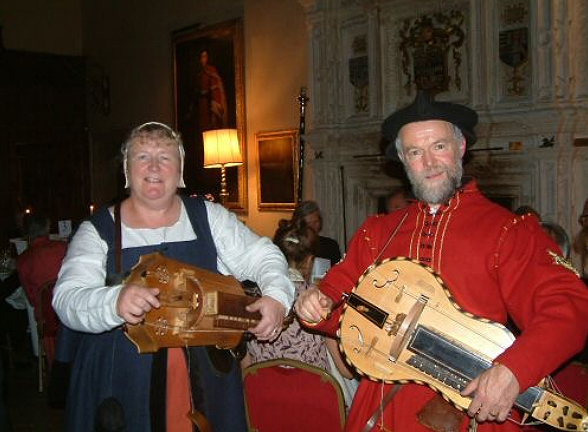Sylvia
We heard the very sad news that Sylvia Henman died between Christmas and New Year. Sylvia was a very familiar face at our meetings, and an active and valued member for well over twenty years.
In 2012 she gave us a very interesting illustrated talk about her life as a farmer and she also worked on the Kineton Churchyard Survey. She will be remembered by many of us for her wide ranging knowledge of wildlife, habitats, and botany. She lived close to nature, loved her garden, and all the birds that visited it.
On Tuesday 12th January at 10.30am Sylvia will be cremated at Oakley Wood, and afterwards, at 11.30, there will be a gathering at the Methodist Chapel in Kineton.
Next Meeting
A reminder that our next meeting is on Friday 15th January 2016 in Kineton Village Hall at 7.30pm, when our President, Dr. Robert Bearman will be talking about “Stratford upon Avon’s Historic Spine”
Future Meetings
Our February meeting is on Friday 19th February 2016 when Richard Buckley will give
a talk on “Richard III and his Rediscovery in Leicester” .
AGM
An early notice that the AGM will be held on Friday, 11th March 2016. After the meeting there will be a supper, and seasonal entertainment will be provided by the energetic and enthusiastic Stephen Wass.
New Year, New Brain?
What is a MOOC?
1. MOOC stands for a Massive Open Online Course.
2. It is an online course aimed at large-scale participation and open (free) access via the internet.
3. It’s similar to a university course, but does not offer academic credits.
4. A number of web-based courses are supported by top universities and colleges and offer MOOCs in a wide range of subjects.
(In an effort to improve my newsletter writing skills I’ve just signed up for the MOOC Open University Creative Writing course – watch this space.)
www.mooc-list.com
For those who missed the December meeting.
Here is an extract from our Chairman’s write-up in the local press…….
At their Christmas meeting members of the Kineton and District Local History Group were hugely entertained by Richard and Elizabeth York, singing, story telling and playing a spectacular variety of ancient musical instruments designed to “Drive the Cold Winter Away”. Richard and Elizabeth turned up an hour early in order to unpack about a score of instruments and tune some 200 strings. Their versatility was impressive, with 4 harps ranging from two large sit-‐down-‐to-‐play ones to an exquisite gem made in the Isle of Skye using only three pieces of wood and no nails or glue. We also heard a Spanish guitar no bigger than a ukelele, bagpipes with drones as tall as a man, drums, pipes with only three holes, an early type of bassoon that could sound vaguely rude, two hurdy-‐gurdys and a concertina. The Yorks touched on the Islamic background to some medieval music, particularly the suggestion that the hurdy gurdy developed from experiments investigating the music of the spheres. The tunes ranged from the 13th to the 18th century, from England and Europe, including some familiar ones.
We learned that it wasn’t until the 16th century that Christmas carols were actually sung in church; the first was “While Shepherds Watched Their Flocks”. Elizabeth sang a gentle lullaby in early English about Mary retelling the story of the Annunciation to Jesus, but other songs were lively dance tunes and carols.

Richard gave us several medieval tales embroidering the Christmas story, usually with a clear moral message. The escape into Egypt was the setting for a cautionary tale to show how the rose bush got its thorns, the clove bush its smell and the sage bush its culinary and medicinal properties.
The evening was a delight; the rapport between Richard and Elizabeth and their enthusiasm for their subject was communicated to an appreciative audience, who even hummed along to some of the more well known tunes.
Kineton’s Soldiers from Bridge Street during and after the First World War
When David Fisher gave us his superbly researched talk in November, it was so full of detailed local information that he has kindly sent us his notes so that we can put them on our website. I’m sure there will be many of us who would like to look up the families and properties in Bridge Street at the beginning of the 20th century, so we are very grateful to him indeed.
Stop Press!
We have just sold our first digitised copy of “Kineton, A Village History” through the Website.
Ilona Sekacz 6 January 2016